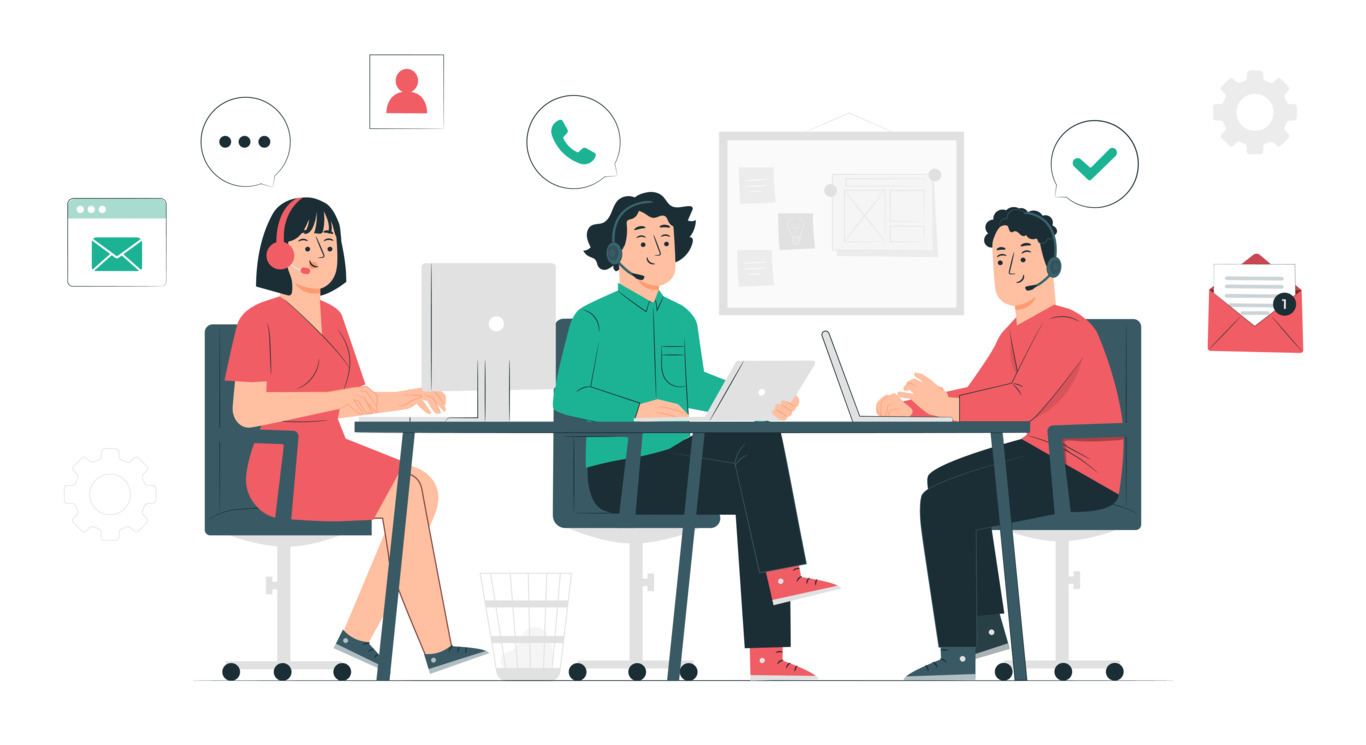When customers contact technical support, they expect to receive help quickly. In order to make this possible, it is necessary for the work of various technical support lines to be well coordinated. What is L1, L2, and L3? Why is L0 needed? And how do you effectively set up interaction between them? Read on.
Customer support staff solve problems of varying complexity. For example, a person might call a delivery service to find out if their couriers travel beyond a certain area. A customer service agent in the first line will easily answer this question.
Or you might have a customer who received something other than what they ordered. In this case, the first-line agent establishes the problem, contacts the head of the delivery service, and tells them what happened. The head of the delivery service tries to find out why this happened but then gets distracted by other tasks… while the customer waits and becomes angry. Even if the customer’s issue is ultimately resolved, their opinion of the company may greatly deteriorate. To prevent this, you can connect a helpdesk – a system for automating work with client inquiries.
First line (L1)
At the first stage, first-line operators work with customer tickets. They can solve most problems without involving other specialists. If they fail, the agent creates a request and transfers it to another line.
Second line (L2)
Here, experts determine the cause of the problem and try to eliminate it. If necessary, they can redirect the ticket to other departments.
Third and subsequent lines (L3)
More narrow and specialized tasks are solved here, as well as problems that can have serious consequences for the business. Third-line employees must be highly qualified professionals who are well versed in certain subject areas.
Zero line: Self Service
There can also be a zero-support line, where customers can independently find solutions to their problems. For example, with Pulsedesk, you can create a knowledge base – a special web page with answers to your company’s most frequently asked questions.
Helpdesk and Interaction Between Lines
The ticket system available in Pulsedesk makes it possible to store all the information about tickets received from different channels – mail, messengers, chat on the website, client portal, phone – in one place. Customer service agents can change their statuses, assign them different tags, and leave comments. Thanks to the ‘Forward Comment’ function, it is easy to involve specialists who aren’t even registered in the system. The required employee will see the question in their mailbox and can answer from there – the message will be imported into the helpdesk.
Assigning tickets to agents also helps speed interaction between employees. The agent does not need to specifically contact colleagues from other lines and transmit all the information to them. It is enough to assign the right person or group of people as executors responsible for processing a specific ticket. The helpdesk administrator needs to set up types of ticket issues – for example, ‘problem’, ‘repair’, ‘payment’, etc. – and then configure automatic actions to be triggered for each of them. As a result, tickets of a certain type will be immediately sent to the specific employee or group of employees that are best able to process them.
Customer support staff solve problems of varying complexity. For example, a person might call a delivery service to find out if their couriers travel beyond a certain area. A customer service agent in the first line will easily answer this question.
Or you might have a customer who received something other than what they ordered. In this case, the first-line agent establishes the problem, contacts the head of the delivery service, and tells them what happened. The head of the delivery service tries to find out why this happened but then gets distracted by other tasks… while the customer waits and becomes angry. Even if the customer’s issue is ultimately resolved, their opinion of the company may greatly deteriorate. To prevent this, you can connect a helpdesk – a system for automating work with client inquiries.
First line (L1)
At the first stage, first-line operators work with customer tickets. They can solve most problems without involving other specialists. If they fail, the agent creates a request and transfers it to another line.
Second line (L2)
Here, experts determine the cause of the problem and try to eliminate it. If necessary, they can redirect the ticket to other departments.
Third and subsequent lines (L3)
More narrow and specialized tasks are solved here, as well as problems that can have serious consequences for the business. Third-line employees must be highly qualified professionals who are well versed in certain subject areas.
Zero line: Self Service
There can also be a zero-support line, where customers can independently find solutions to their problems. For example, with Pulsedesk, you can create a knowledge base – a special web page with answers to your company’s most frequently asked questions.
Helpdesk and Interaction Between Lines
The ticket system available in Pulsedesk makes it possible to store all the information about tickets received from different channels – mail, messengers, chat on the website, client portal, phone – in one place. Customer service agents can change their statuses, assign them different tags, and leave comments. Thanks to the ‘Forward Comment’ function, it is easy to involve specialists who aren’t even registered in the system. The required employee will see the question in their mailbox and can answer from there – the message will be imported into the helpdesk.
Assigning tickets to agents also helps speed interaction between employees. The agent does not need to specifically contact colleagues from other lines and transmit all the information to them. It is enough to assign the right person or group of people as executors responsible for processing a specific ticket. The helpdesk administrator needs to set up types of ticket issues – for example, ‘problem’, ‘repair’, ‘payment’, etc. – and then configure automatic actions to be triggered for each of them. As a result, tickets of a certain type will be immediately sent to the specific employee or group of employees that are best able to process them.
Thanks to modern helpdesk systems, it is easy and convenient to help customers. Companies that use them are becoming more competitive and successful.








